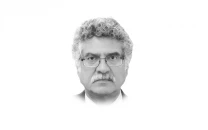Muted mandate: SAARC and the cycle of Indo-Pak escalation
.

When founded, in 1985, the South Asian Association for Regional Cooperation (SAARC) was envisioned as a platform for regional harmony and collective progress. However, its role in mitigating the most recent escalation between Pakistan and India, triggered by the Pahalgam incident of April 22, and the subsequent military and diplomatic fallout, has been conspicuously absent and critically limited.
An objective evaluation reveals that SAARC, hampered by its inherent structural weaknesses and the deep-seated animosity between its two major players, has once again failed to act as an effective mechanism for de-escalation or mediation.
One of the fundamental limitations of SAARC is its charter, which explicitly excludes discussions on bilateral and contentious political issues. This very clause, intended to foster cooperation in socio-economic areas without being held hostage by political disputes, renders the organisation toothless when the most pressing regional challenges are political in nature, as is the case with Indo-Pak relations. Consequently, SAARC summits and ministerial meetings become stages for polite exchanges on trade and culture, while the elephant in the room — the persistent and often escalating tensions between Pakistan and India — remains unaddressed within the formal structure.
The recent crisis, which saw a rapid deterioration of diplomatic ties, cross-border accusations and even military posturing and engagement, demanded an immediate and robust regional response. Ideally, SAARC should have provided a forum for dialogue, a neutral space for both nations to air their grievances, and a mechanism to facilitate de-escalation through diplomatic channels. However, the bloc remained largely silent as bilateral tensions spiraled, underscoring its inability to transcend the nationalistic agendas of its member states, particularly when these agendas are in direct conflict.
The history of SAARC is replete with instances where Indo-Pak tensions have undermined its potential. The 2016 summit was cancelled after the Uri attack. The 2019 Pulwama-Balakot standoff further marginalised the organisation. In each instance, SAARC's structural design and political inertia have rendered it a bystander. The current escalation is no different. With both nations locked in a familiar cycle of accusation and retaliation, SAARC's consensus-based decision-making process becomes a significant impediment. Any meaningful action or statement requiring the agreement of all member states is virtually impossible when the two most influential members are in direct confrontation.
Furthermore, the lack of strong institutional mechanisms for conflict resolution within SAARC contributes to its ineffectiveness during crises. While the charter emphasises peaceful settlement of disputes, it lacks concrete procedures or a dedicated body to mediate or arbitrate in situations of heightened tension. This void leaves the region reliant on external actors or ad-hoc bilateral engagements, bypassing the very regional framework that was intended to foster collective security and stability.
Despite these shortcomings, SAARC could still play a subtle, indirect role. By continuing to promote people-to-people contact, cultural exchanges and economic cooperation in areas where consensus exists, the organisation might foster a long-term environment of trust and understanding that could eventually spill over into the political domain. However, during times of acute crisis, these slow-burn initiatives are often overshadowed by immediate security concerns and nationalist sentiments. The palpable tension following the Pahalgam incident and India's subsequent actions has likely curtailed any such positive momentum.
While the ideal of regional cooperation in South Asia remains vital, the current iteration of SAARC has proven to be an inadequate instrument for managing and resolving the most pressing security challenges facing the region. A fundamental re-evaluation of its charter and a genuine commitment from its member states to prioritise regional harmony over narrow nationalistic interests are essential if SAARC is to evolve from a largely symbolic entity into a meaningful force for peace and cooperation in South Asia.



1729685382-0/Untitled-design-(57)1729685382-0-208x130.webp)










COMMENTS
Comments are moderated and generally will be posted if they are on-topic and not abusive.
For more information, please see our Comments FAQ